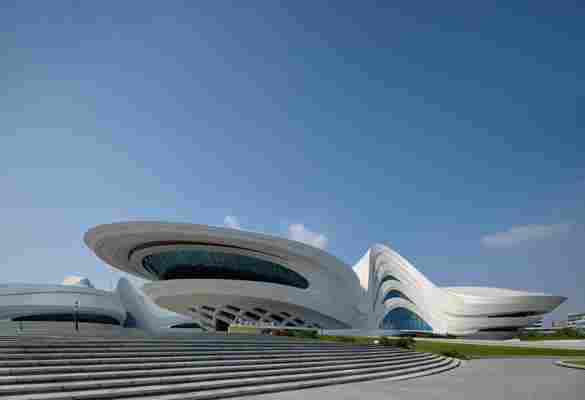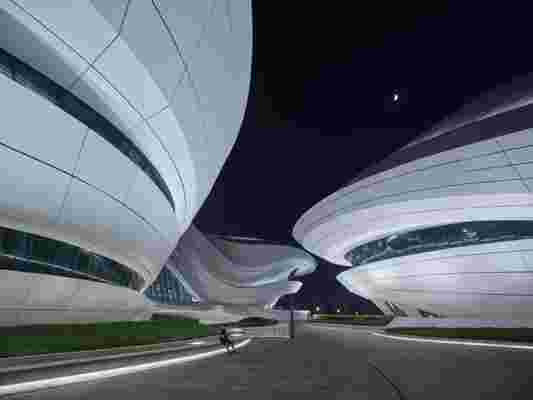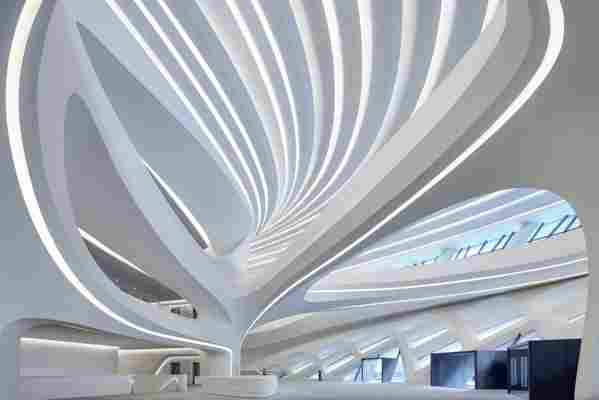Another day, another Zaha Hadid Architects masterpiece. The most recent completed project by the esteemed firm is the Changsha Meixihu International Culture and Art Centre, located in Changsha, the capital city of China’s Hunan province. Changsha is in the midst of a massive overhaul—a $130 billion stimulus plan targeting infrastructure improvements went into effect in 2012—in which the new center plays a large role.

Like so many of ZHA's designs, the new cultural center has the appearance of a structure that's landed from a different planet.
Across its 1.2 million square feet of space on the shores of Meixi Lake, the center houses the MICA contemporary art museum (which itself has eight galleries, a café, workshop space, and a gift shop set around a massive central atrium), a 1,800-seat grand theater with a mesmerizing wood interior, and a 500-seat multipurpose hall for special productions like fashion shows and concerts. Between these three major components are exterior courtyards that will host their own events and exhibitions.

The space has a ribbon-like walkway that winds through the various buildings that make up the complex.
In true Zaha Hadid style, the center’s white structures take on futuristic forms, featuring ribbon-like undulations both inside and out that reflect the pedestrian pathways that weave through the campus, not to mention the walking trails on the adjacent Festival Island.

The interior twists and turns, making the design inside the building as dramatic as the outside.
And from a more abstract point of view, they could even represent the ancient trade routes that once passed through Changsha. There’s also a link to more contemporary routes within the city—the center is connected to the Changsha’s new metro system, another result of the stimulus plan.
The ultimate resource for design industry professionals, brought to you by the editors of Architectural Digest
Inside the 1,800-seat grand theater.
The complex opened last week with its debut exhibition, “Flowing Eternity” by MOTSE, a collective of artists and scientists from Shenzhen who use technology, media, and art to explore and comment upon contemporary culture and society.
